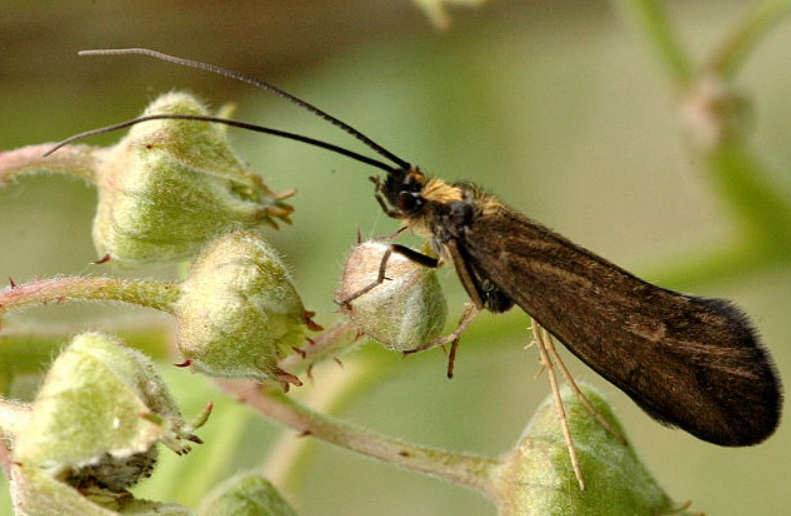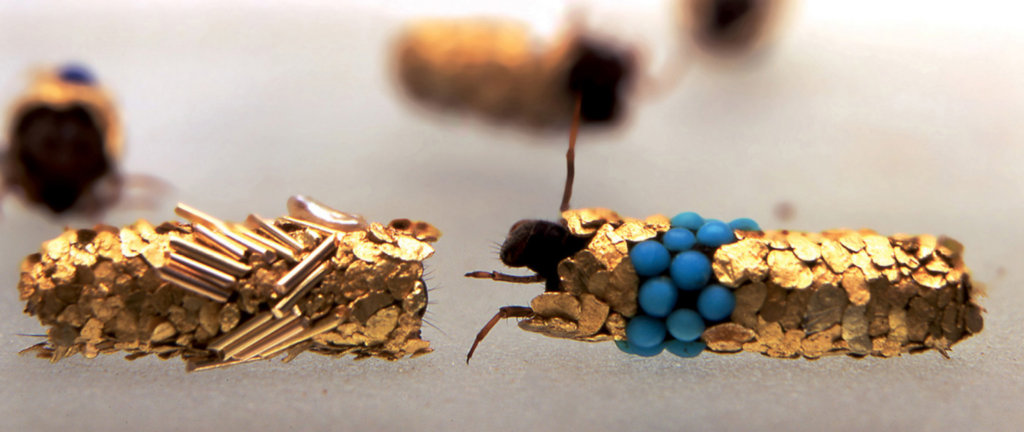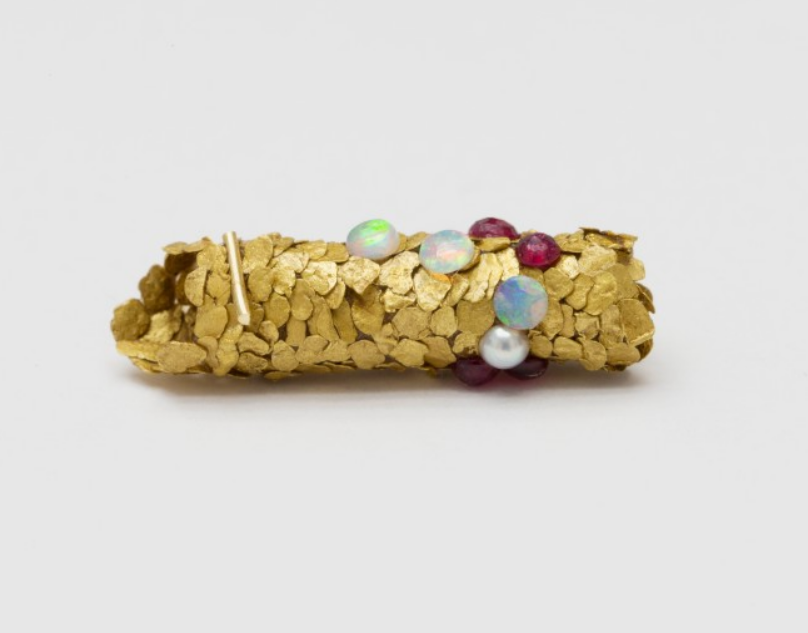
Most people don’t realize it, but as they walk across a stream, feeling the stones underneath as they walk, there is a rich diversity of insects that make their homes directly underfoot. And yes, they typically look kind of gross. But it is just how they look as babies (larvae), but as adults they might end up as dazzling blue dragonflies. Or black flies. Or a host of less-desirables. But today we will focus on the ones that we like, specifically caddisflies.
What is amazing about all the larval insects you find in a stream, is that they can tell you a lot about the stream itself. These macroinverterbrates might live for years in the water before becoming adults. You may think they live only days or weeks. That is how they are as adults; their life cycles are much longer, and so the stories they tell are too. One thing we can look at is what they eat. Different insects eat different food, so ones that shred leaves are found upstream more than those who feed on detritus floating in the water. Some are hunters that require prey, and others eat algae, scraping them off underwater surfaces. All this is important information about the stream. One of the most important things these insects tell us is the quality of the water itself.
Imagine for instance, a stream suffers a chemical spill. Well, many of these insects cannot survive in toxic water. It could also be effluent from a septic system polluting the stream, but the result is the same. Some species might live in this environment. Black flies are resilient, regularly breeding in polluted waters, but caddisflies are not. Black flies breed fast; caddisflies may take years to mature. So if you have adult caddisflies, you have water that has been clean for at least a year, if not more. If you have only black flies, the water is filthy.
Ecologists actually use this information to regularly survey the macroinvertebrates living in the bottom of a stream. They actually brush rocks in the water, forcing anything on them to float away in the water. They collect this material in nets, sorting and counting the insects. Based on the populations of mayflies (ephemeraptera), stoneflies (plecoptera), and caddisflies (trichoptera)–commonly called an EPT survey–they can determine the quality of the water.
![ENT 425 | General Entomology | Resource Library | Compendium [trichoptera]](https://projects.ncsu.edu/cals/course/ent425/images/compendium/trichoptera/caddis1c.gif)
Well, if the water is clean then it can support larval caddisflies. Clean, but not without predators, and the larvae need protection. Many caddisflies are crafty, creating really cool cases out of detritus–leaves, sticks, rocks, and anything else they find–bound with silk they produce.
Hubert Duprat is an artist who admired these artistic skills of caddisflies and decided to work with them on some projects (though I suspect the insects were rather confused with the whole process. What he did was recognize how caddisflies use materials in their surroundings to build their cases, and so he provided them with more beautiful objects to work with, like flakes of gold and precious stones. The unwitting larvae complied, creating fascinating works.



Thus, even at the bottom of a stream, an ugly insect can collect trash to make really cool works of art. And when provided with the right materials, they can be downright stunning.
